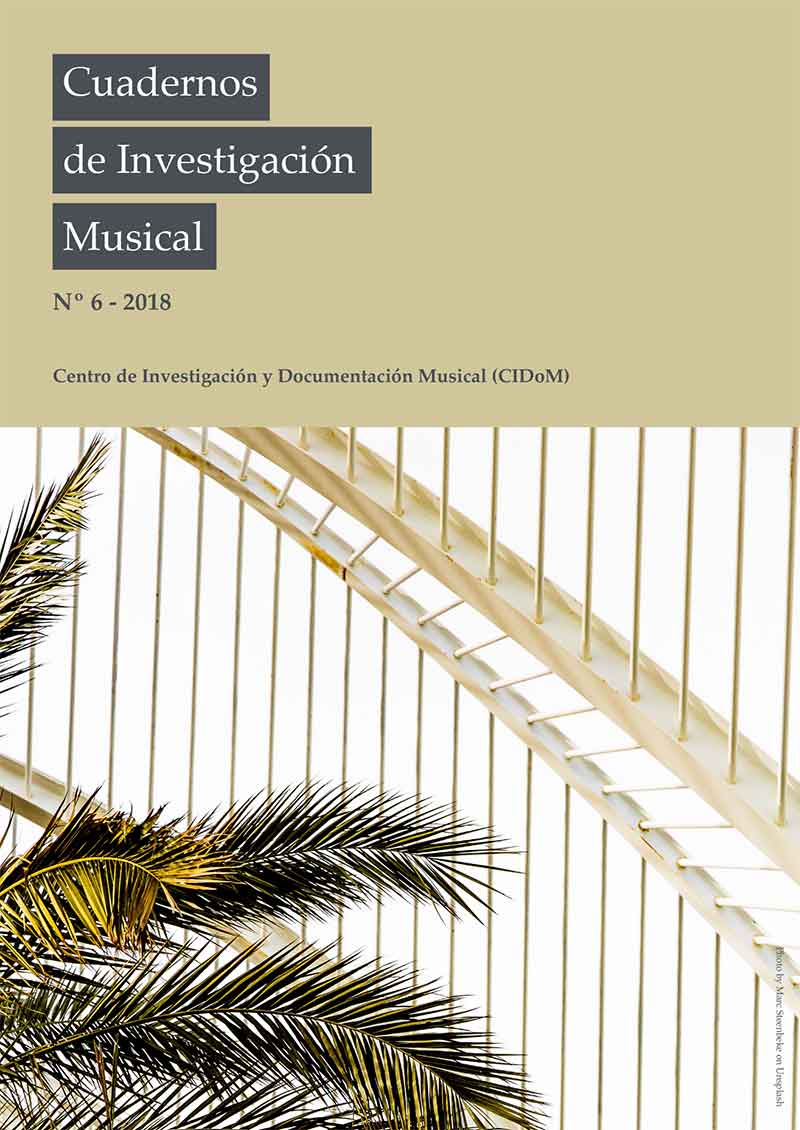White Mensural Manual Encoding: from Humdrum to MEI
DOI:
https://doi.org/10.18239/invesmusic.v0i6.1953Resumen
The recovery of musical heritage currently necessarily involves its digitalization, not only by scanning images, but also by the encoding in computer-readable formats of the musical content described in the original manuscripts. In general, this encoding can be done using automated tools based with what is named Optical Music Recognition (OMR), or manually writing directly the corresponding computer code. The OMR technology is not mature enough yet to extract the musical content of sheet music images with enough quality, and even less from handwritten sources, so in many cases it is more efficient to encode the works manually. However, being currently MEI (Music Encoding Initiative) the most appropriate format to store the encoding, it is a totally tedious code to be manually written. Therefore, we propose a new format named **mens allowing a quick manual encoding, from which both the MEI format itself and other common representations such as Lilypond or the transcription in MusicXML can be generated. By using this approach, the antiphony Salve Regina for eight-voice choir written by Jerónimo de la Torre (1607–1673) has been successfully encoded and transcribed.
Publicado
Número
Sección
Licencia
Los autores de los artículos mantienen el copyright, no recibirán ninguna contraprestación económica por el trabajo y el mismo siempre será reconocido como exclusivamente suyo. La revista se compromete a proteger la integridad y originalidad del artículo, así como los derechos de autor que correspondan. Los autores son los únicos responsables del material, textos e imágenes que utilizan en sus respectivos trabajos, debiendo respetar siempre los derechos de autor de terceras personas, por lo que la revista no se hace responsable de lo contenido en este tema respecto al trabajo de los autores.


